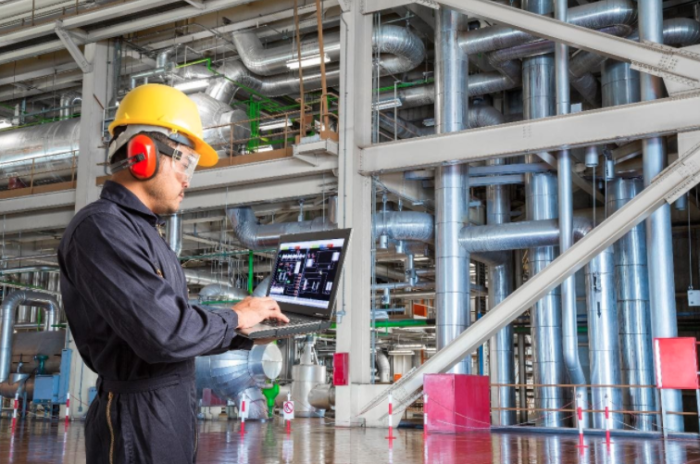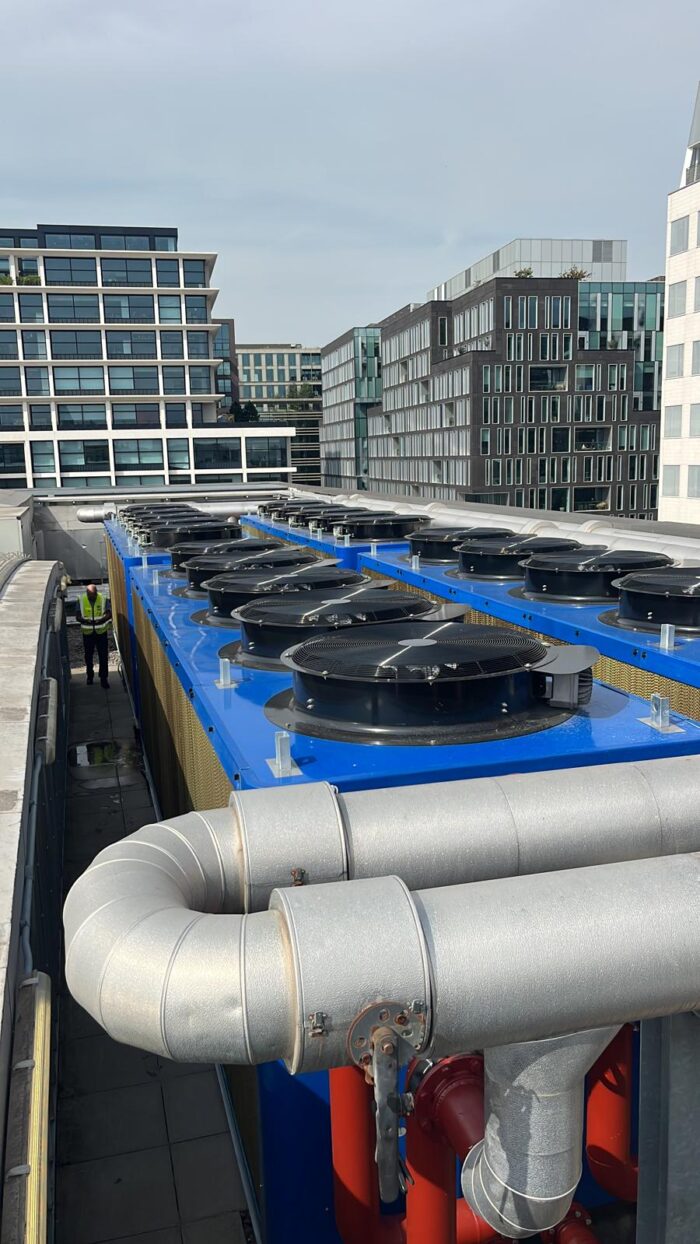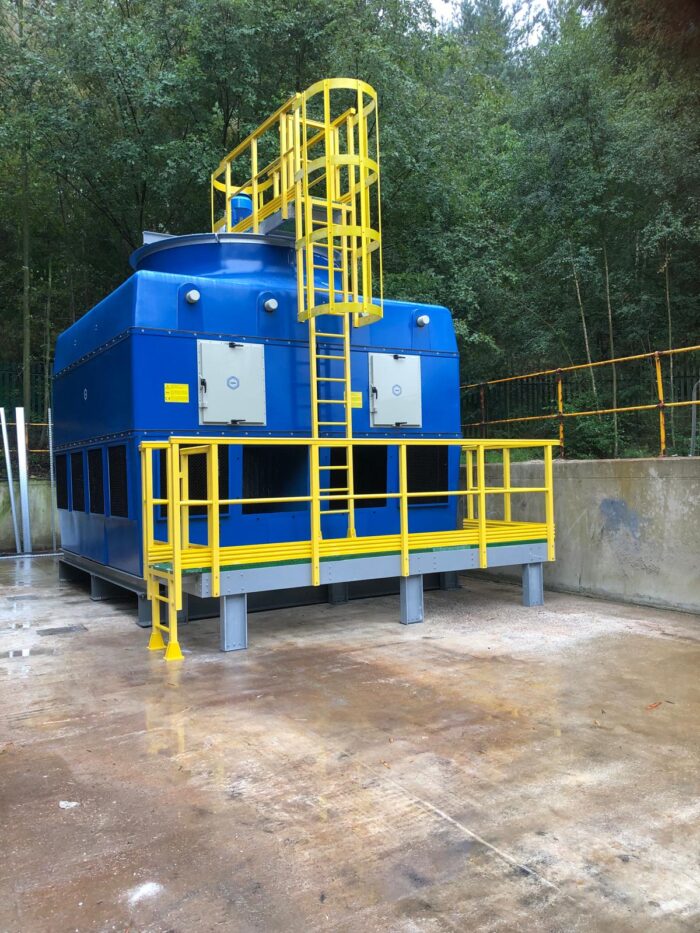By Richard Crunden, Managing Director of Vistech Cooling Systems Ltd

UK manufacturing is currently grappling with a dual challenge: rising energy prices and mounting regulatory demands for decarbonisation. Compared to France and Germany, UK industries pay around 50% more for electricity, a situation exacerbated by the energy-intensive nature of key sectors like steel, cement, and paper. This cost disparity, coupled with increased emissions, has severely impacted the global competitiveness of UK industry.
Compared to France and Germany, UK industries pay around 50% more for electricity
One often overlooked contributor to these high energy costs is the outdated state of industrial cooling systems in the UK. Decades of underinvestment have left the sector with inefficient, patchwork cooling infrastructures that waste both water and energy. Many of these systems are difficult to monitor, maintain, or upgrade, representing a growing burden for businesses trying to cope with rising energy prices and stricter net-zero regulations.
Fragmented Systems, Fragmented Thinking
Cooling systems are vital to the overall efficiency of industrial processes, but many British manufacturers are failing to capitalise on this. The cooling infrastructure in many UK factories is antiquated and inefficient, having been pieced together over decades with no cohesive plan. The prevailing attitude of “make do and mend” has led to a reliance on retrofitting new components rather than overhauling the entire system. This disjointed approach is compounded by a shortage of skilled process engineers who can integrate systems and streamline operations. Unsurprisingly, only 12% of UK manufacturers have made significant improvements to enhance energy efficiency across their processes.
The prevailing attitude of “make do and mend” has led to a reliance on retrofitting new components rather than overhauling the entire system
The Unseen Drain on Energy
This inefficiency leads to significant energy waste, escalating both operational costs and carbon emissions. Some manufacturers are spending three to four times more than necessary to run their facilities. In industries such as automotive, it’s common to find cooling systems—pumps and fans—running at full power around the clock, even when not needed.
This excessive energy consumption contributes to the fact that UK manufacturers are now more energy-intensive than their European counterparts. With UK electricity costs already higher than in many EU countries, the energy inefficiency of these outdated systems further undermines competitiveness. Furthermore, efforts to reduce the carbon footprint of hard-to-decarbonise industries like steel and cement are being hampered by inefficient energy usage.

A New Approach: Building from the Ground Up
UK manufacturers must shift their perspective and view cooling systems not as an afterthought but as an integral part of achieving competitive advantage. Energy efficiency should be seen as an opportunity, not just a regulatory requirement. Businesses need to adopt smarter, more sustainable processes that align with net-zero goals and improve their competitiveness on a global scale.
Instead of simply upgrading individual components, manufacturers should look to modernise and simplify their entire cooling infrastructure. For example, one company reduced its annual energy consumption by 410,000 kWh by optimising its existing cooling system.
One company reduced its annual energy consumption by 410,000 kWh by optimising its existing cooling system
The use of advanced data collection technologies can be a game changer, enabling manufacturers to identify inefficiencies across all aspects of their industrial processes.
Monitoring data such as pump vibrations or fan operating times can provide valuable insights that help optimise performance, reduce costs, and cut carbon emissions. For instance, modifying cooling towers to lower water temperatures can result in substantial savings.
Moreover, these insights can reveal areas of excess capacity, enabling manufacturers to streamline their cooling processes and further reduce energy usage. Predictive maintenance using smart data can also be employed to prevent costly breakdowns and inefficiencies, ensuring that systems run smoothly and cost-effectively. In the future, machine learning could further enhance this by creating self-managing, adaptive cooling systems.
Innovations in Cooling Technology
Beyond modernising existing processes, there are innovative new cooling systems available that can significantly improve energy efficiency. Advanced cooling tower designs, for instance, use high-efficiency spray systems and induced draft fans to draw out hot air, reducing operational costs by up to 50%. Some smart cooling towers can even be monitored remotely via smartphones and include energy-saving features like inverters and control loops.
Another option is adiabatic coolers, which use air pressure changes to reduce heat and consume up to 90% less water than traditional cooling methods. Smart scheduling tools can further cut energy usage by regulating operational times. One manufacturer saved £70,000 annually by installing adiabatic coolers.
One manufacturer saved £70,000 annually by installing adiabatic coolers
The Path to Smarter Manufacturing
UK manufacturers are increasingly being outpaced by international competitors adopting more energy-efficient and smarter manufacturing practices. With electricity costs and energy consumption continuing to rise, UK industry urgently needs a fundamental rethinking of its approach to industrial processes. This shift is crucial as environmental regulations drive up the cost of inefficiency, and the international race for decarbonisation intensifies.
The time has come for UK manufacturing to embrace smarter, integrated processes—starting with industrial cooling. By adopting a bottom-up approach, manufacturers can position themselves for a more competitive, sustainable future where energy efficiency is not just a necessity, but a strategic advantage.

